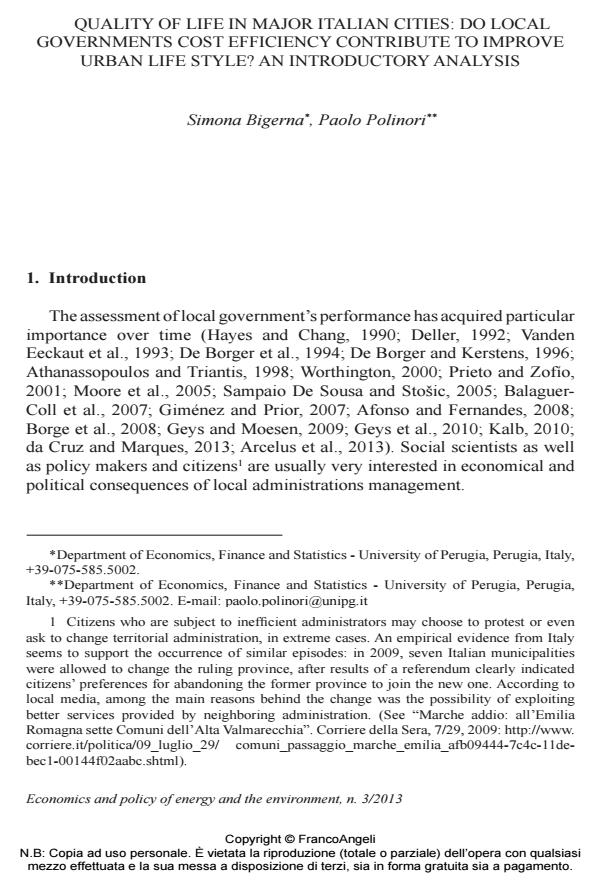Quality of Life in Major Italian Cities: Do Local Governments Cost Efficiency Contribute to Improve Urban Life Style? An Introductory Analysis
Journal title ECONOMICS AND POLICY OF ENERGY AND THE ENVIRONMENT
Author/s Simona Bigerna, Paolo Polinori
Publishing Year 2014 Issue 2013/3
Language English Pages 24 P. 121-144 File size 818 KB
DOI 10.3280/EFE2013-003005
DOI is like a bar code for intellectual property: to have more infomation
click here
Below, you can see the article first page
If you want to buy this article in PDF format, you can do it, following the instructions to buy download credits

FrancoAngeli is member of Publishers International Linking Association, Inc (PILA), a not-for-profit association which run the CrossRef service enabling links to and from online scholarly content.
In this paper we set forth a novel analysis of urban quality of life (QoL) using Data Envelopment Analysis (DEA) approach. We use a newly constructed municipality database, which includes all 103 provincial capitals. In our approach we follow a two-stage method. In the first stage, we estimate efficiency scores through a nonparametric DEA with desirable and undesirable outputs. Estimated rankings are compared to Legambiente index. In the second stage, we regress efficiency scores on economic, social and political variables. Our main objective is to estimate non discretionary variables effects on efficiency. According to Simar and Wilson (2007) results show that local government efficiency is highly heterogeneous and that there exists high correlation among our rankings and Legambiente index. Considering exogenous effects, geographical conditions and political aspects constitute the main determinants of municipalities’ efficiency.
Keywords: Data Envelopment Analysis; Two-stage; Quality of Life; Undesirable output; Local Government Efficiency
Jel codes: C24, C61, R38
Simona Bigerna, Paolo Polinori, Quality of Life in Major Italian Cities: Do Local Governments Cost Efficiency Contribute to Improve Urban Life Style? An Introductory Analysis in "ECONOMICS AND POLICY OF ENERGY AND THE ENVIRONMENT" 3/2013, pp 121-144, DOI: 10.3280/EFE2013-003005